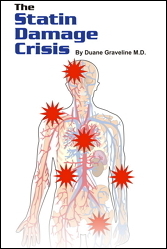The Food Pyramid, Revisited
 By Laurence D. Chalem
By Laurence D. Chalem
As I wrote in my first book, the food pyramid presented by the United States Department of Agriculture ( USDA ) is quite a good guide for diabetics, if you turn it upside down. And if you forgo fruits, whole grains, starches, and fat-free milk products.
As a function of energy, each meal should be comprised of 50%-65% fat, 25%-35% protein, with as little carbohydrates as can be achieved. Please do perform your own search for information, and consult with your doctor, about supplement use to include aspirin, chromium, vitamin D, fiber, niacin, vitamin B, vanadium, vitamin C, fish oil (EPA & DHA), cod liver oil, & others.
Fats and oils to include in your diet should include those consisting primarily of saturated fat, such as coconut oil and real cheese; mono-unsaturated fat, such as macadamia nut oil and olive oil; and, in much smaller amounts, polyunsaturated oil, such as fish oil and flaxseed oil.
Other mostly saturated fats that could be used in the diet include cream, tallow, butter, cocoa butter, nutmeg butter and palm oil. Other mostly mono-unsaturated fats include pecan oil, almond oil, avocado oil, sesame oil, chicken fat, duck fat, goose fat, turkey fat, peanut oil, lard, & canola oil; other mostly polyunsaturated oils include, black currant oil, borage oil, primrose oil, krill oil, cod liver oil & walnut oil.
In Dr. Mary Enig's seminal work - all her books are - Eat Fat, Lose Fat, she espouses the use of coconut oil in every meal, as a snack, and in your tea. "Among saturated fats, coconut is queen because of its special properties," says Dr. Enig. "Coconut contains abundant medium-chain fatty acids (MCFAs), contains high amounts of lauric acid, and is synergistic with essential fatty acids."
Since using cold-pressed coconut oil instead of macadamia nut oil - saturated fat instead of mono-unsaturated fat - as the predominant fat in my diet in 2008, all else nearly equal, at that time my VLDL level decreased from 26 to 15 mg/dL (a 38% decrease), my HDL level increased from 46 to 61 mg/dL (an increase of 33%), my LDL level was relatively unchanged, and my triglyceride level decreased from 132 to 81 mg/dL (a decrease of 39%). But, the real question is: does lowering LDL or raising HDL have anything to do with health? Does any of this business reduce the risk of heart disease?
In Uffe Ravnskov's brief response to an article on hypercholesterolemia and its management entitled "Hypercholesterolaemia: Should Medical Science Ignore the Past?" he provides support for his stance that revision of the cholesterol campaign by scientists without links to the food or drug industry are needed, and in so doing, provides a good summary of the arguments in favor of a diet high in fat.
I cannot possibly do the subject of cholesterol and heart disease justice. There are, however, many great, recent books on the subject. What they all have in common, as de Lorgeril and Salan have recently pointed out, is that the risk of sudden coronary death is independent of total cholesterol and LDL, and sudden coronary death accounts for over 50% of all cardiac mortality. In fact, careful analysis of the available data, including randomised trials, indicates that, contrary to a widespread opinion, cholesterol lowering does not appear to be a very effective way of reducing cardiac and overall mortality in the general population.
Ischemic heart disease is not developed from plaque made up of particles of fat and cholesterol that stick to the artery walls like sewage inside a pipe; rather, it is arterial muscle tissue, white blood cells, collagen, calcium, blood platelets, and more, that gets trapped as boils within the first and second layers of the arterial wall that serves as the genesis of atherosclerosis. Subsequent clot formation after the contents of the plaque ( better described as a boil ) bursts through the arterial wall is the most likely cause of a coronary event.
For an accessibly written tome attributing ischemic heart disease to anergy, bacteria, prothrombin, homocysteine, and increased iron-that the vulnerable atherosclerotic plaque, better called a boil, is produced by neutrophil leucocytes-and not by cholesterol per se, you are encouraged to read Fat and Cholesterol are Good for You! What Really Causes Heart Disease, by Uffe Ravnskov, MD, PhD (Sweden: GB Publishing, 2009).
Kilmer S. McCully, MD, is recognized as the first person to discover and propose the homocysteine theory of heart disease in 1969. His book, The Heart Revolution: The Extraordinary Discovery That Finally Laid the Cholesterol Myth to Rest (New York: Perennial, 1999), is simply fascinating, albeit his diet includes a large percentage of carbohydrates. Not to worry; we can easily incorporate his advice without adhering to his diet.
Returning to our discussion of macronutrients, protein sources include all varieties of fish, sashimi, beef, pork, fowl, whey, fermented soy, and eggs. Remember that some carbohydrates and fat are present in animal muscle; seek non-grain fed animal products.
Vegetables are the recommended carbohydrates to consume and should be eaten raw, which tends to raise blood sugar much slower than cooked vegetables. Acceptable vegetables include artichoke hearts, asparagus, bamboo shoots, beet greens, bell peppers, bok choy, broccoli, Brussels sprouts, cabbage, celery, collard greens, daikon radish, dandelion greens, eggplant, endive, escarole, hearts of palm, kohlrabi, mushrooms, mustard greens, okra, pumpkin, radicchio, rhubarb, sauerkraut, scallions, snow peas, spinach, string beans, squash, turnip greens, turnips, water chestnuts, watercress, and zucchini.
Laurence D. Chalem (b. 1963), a type 1 diabetic, has been passionately researching diabetes for the last decade. In his most recent book, Essential Diabetes Leadership, Laurence investigates the literature of the last three centuries in search of an optimal treatment of diabetes.
Updated August 2011






